Marbled sheet cake
My mom always made a cake for family birthday celebrations when I was growing up, but if she was throwing a birthday party for me and my friends, she’d take me to our local grocery store, Schnucks, to order a sheet cake from the bakery. I remember flipping through laminated pages of design options, and, on at least one occasion, selecting a marbled sheet cake with white icing. Here I’ve created a homemade version, and to replicate the moist and tender crumb found in store-bought cakes, I use mayonnaise in the batter. Don’t turn the page—it’s not as weird as it sounds.
Mayonnaise is, after all, a mixture of egg, oil, salt, and acid, and each of these things plays a role in cake making. I cover the cake in ermine frosting, an old-fashioned frosting that’s super light and fluffy and recalls (in a good way) the artificial frosting on grocery store sheet cakes. Some of this may sound dubious, but please give it a try.
Ingredients
- For the cake:
- Neutral oil for the pan
- 3 cups all-purpose flour
- 2 t baking powder
- 1 t bicarbonate of soda
- ½ t kosher salt
- ⅓ cup unsweetened cocoa powder, sifted if lumpy
- ⅓ cup brewed coffee, at room temperature
- 2 T plus 1¾ cups sugar
- 4 large eggs, at room temperature
- 1¼ cups mayonnaise, such as Hellmann’s
- 1 T vanilla extract
- 1¼ cups buttermilk, at room temperature
- For the icing:
- 5 T all-purpose flour
- ¼ t Morton kosher salt
- 1 cup milk
- 2 t vanilla extract
- 170 g unsalted butter, cut into 1-tablespoon pieces, at room temperature
- 170 g cream cheese, cut into 1-tablespoon pieces, at room temperature
- ½ cup sugar
- Sprinkles, for serving
Cooking Instructions
1. Preheat the oven 162°C. Brush the bottom and sides of a 13 × 9-inch pan with a thin layer of oil.
2. Line the bottom and two long sides of the pan with a piece of parchment paper, leaving a bit of overhang and smoothing it to eliminate air bubbles.
3. In a medium bowl, whisk together the flour, baking powder, baking soda, and salt to combine. Set aside.
4. In a separate medium bowl, whisk together the cocoa powder, coffee, and 2 T of the sugar until smooth. Set aside.
5. In a large bowl, with a hand mixer, beat the eggs and remaining 1¾ cups of sugar on medium-low speed until combined, then increase the speed to high and beat until the mixture is thick, pale, and voluminous about 3 minutes.
6. Gradually add the mayonnaise, a few tablespoons at a time,
beating constantly, and continue to beat until the mixture is smooth and well combined, about 2 minutes. Beat in the vanilla.
7. Reduce the mixer speed to medium-low and add about
one-third of the dry ingredients, mixing just until the flour disappears.
8. Stream in about half of the buttermilk and beat until incorporated, then add the remaining dry ingredients in two additions, alternating with the remaining buttermilk, and mix just until the last trace of flour disappears.
9. Fold the batter several times with a flexible spatula, scraping the bottom and sides of the bowl to make sure it’s evenly mixed.
10. Pour half of the batter—about 4 cups if you want to be exact—into the bowl with the cocoa mixture and beat with the hand mixer on medium-low until the chocolate batter is streak-free.
11. Holding a bowl with each hand, alternate pouring the vanilla and chocolate batters into the prepared pan, layering them on top of each other. Scrape in every last bit of both batters, then drag a skewer or the tip of a paring knife through the pan, making figure eights, to swirl the batters together.
12. Bake until the surface of the cake is risen and light golden across the vanilla patches, and a cake tester or skewer inserted into the center comes out clean, 40 to 45 minutes, rotating the pan front to back after 25 minutes. Let the cake cool completely in the pan.
13. To make the icing: In a small saucepan, combine the flour and salt and whisk to eliminate any lumps. Stream in the milk, whisking constantly, until you have a smooth, fluid mixture, then set the saucepan over medium-high heat and cook, whisking constantly, until the mixture is bubbling and thick and has the consistency of smooth mashed potato, about 3 minutes.
14. Remove the saucepan from the heat and whisk in the vanilla. Scrape the mixture into a small bowl and press a piece of plastic directly onto the surface to prevent a skin from forming, then set the mixture aside to cool completely.
15. In a large bowl, with a hand mixer, beat the butter, cream cheese, and sugar on medium speed until smooth, then increase the speed to high and beat until the mixture is pale and light, about 3 minutes. Beating constantly, add the cooled flour mixture to the butter mixture a couple of tablespoons at a time, beating thoroughly after each addition.
16. Once all of the flour mixture has been added, continue to beat until the sugar has completely dissolved (rub a dab between your fingers to check for any grit) and the frosting is nearly white and looks like whipped cream, about 4 minutes. If the frosting is a little bit loose and doesn’t hold a stiff peak, place the bowl in the refrigerator and chill, beating briefly with the hand mixer every 10 minutes, until it holds a stiff peak Set the icing aside.
17. Use a paring knife or small offset spatula to cut between the cake and the pan along the shorter sides. Invert the cake onto a wire rack, then lift off the pan and peel away the parchment paper. Reinvert the cake onto a serving platter (or a cutting board, if you don’t have a platter large enough for the cake). Scrape the icing onto the cooled cake and
spread across the surface and down the sides. Top with sprinkles.
Cook's note: Potential pitfalls when making the icing - Depending on the size of your saucepan and whisk, you could have a few lumps in your flour mixture. These lumps will persist in the icing, so press the mixture through a mesh sieve to smooth it out before proceeding. The icing is temperature-sensitive, so store the iced cake away from any sources of heat to prevent it from melting.
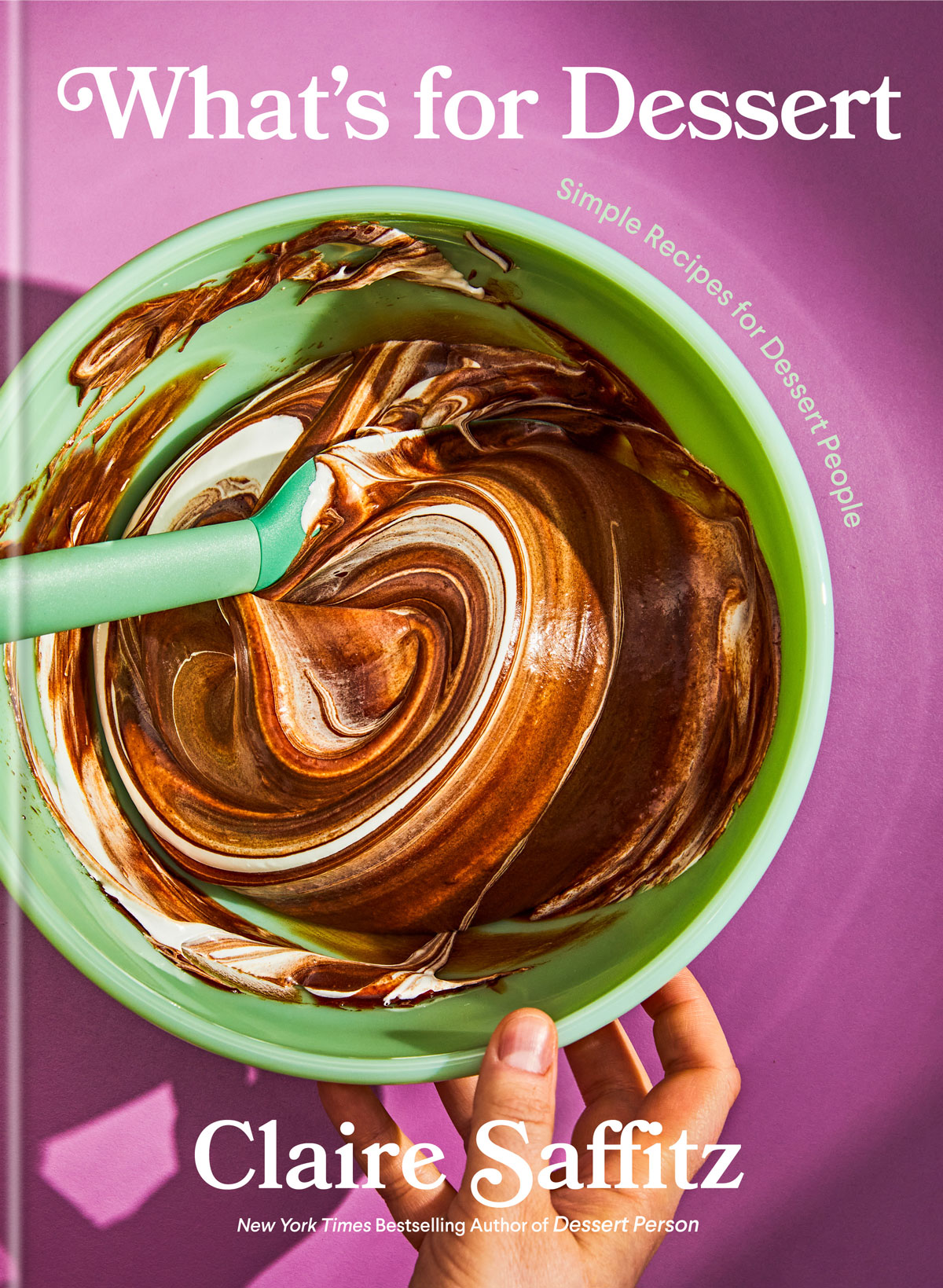
This is an extract from What's for Dessert: Simple Recipes for Dessert People by Claire Saffitz (Murdoch). Photographs by Jenny Huang.

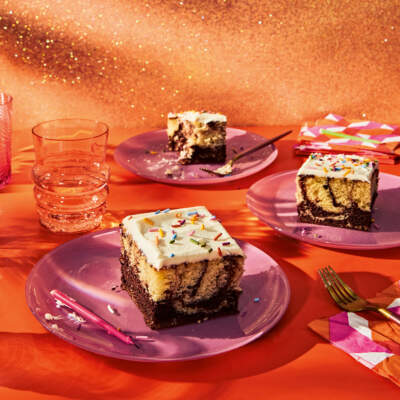
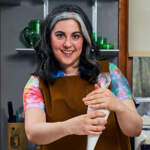
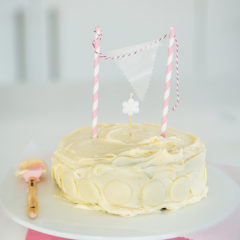
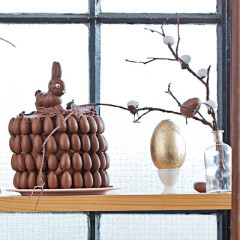
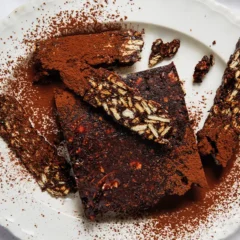
Comments